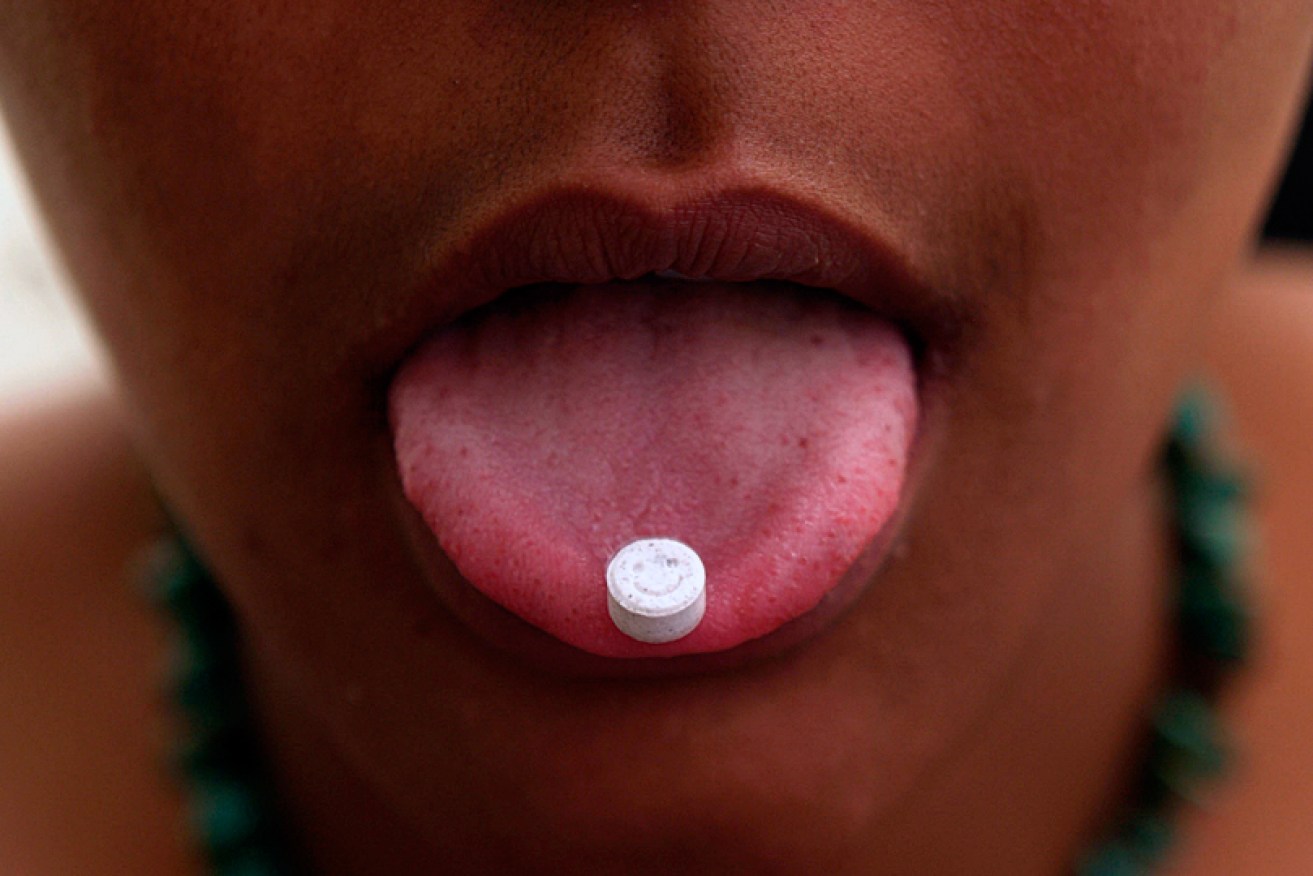‘Higher purity’ party drugs on the rise among young people


Ecstasy pills, like this one, are being replaced by stronger capsules. Photo: Getty
Young people are increasingly turning to purer forms of party drugs that are stronger and potentially more harmful, a new report on Australian drug trends has revealed.
Findings released on Monday by the National Drug and Alcohol Research Centre (NDARC) show the percentage of people using ecstasy in crystal or capsule form has hit record levels over the past decade.
Ecstasy crystals and capsules often contain a higher purity of the drug, and are reportedly stronger than ecstasy pills, the researchers said.
The report comes only weeks after two young people died from suspected drug overdoses at the Defqon.1 music festival in Sydney, reigniting fresh calls for pill testing at events.

Two people died after suspected drug overdoses at a Sydney music festival. Photo: Defqon
Data collected for the study was based on self-reported information obtained from a sample of 799 young Australians from all capital cities.
Study participants who used ecstasy were more likely to be male, around 21 years old, and in stable employment or tertiary study.
Dr Amy Peacock, program lead for drug trends at NDARC, cautioned that the findings do not represent drug use in the general population but the trends observed in this recent study are a cause for concern.
“Use of higher-purity stimulants can increase the risk of experiencing acute and long-term negative health effects,” Dr Peacock said.
“Acute effects may include dehydration, increased or irregular heart rate, agitation, headaches, and seizures. Use over long periods of time without sleep or in combination with other substances can increase the risk of these types of effects.”
Since 2008, the popularity of ecstasy capsules has skyrocketed among users from 19 per cent to 72 per cent.
The crystal form also increased from 39 per cent in 2013 (earliest year available) to 62 per cent in 2018.
According to the data, ecstasy pills are still the most reported form of the drug used – though this has been steadily declining over recent years.
Cocaine use has also increased to record levels in the past decade, from 23 per cent in 2003 to 59 per cent in 2018.
The researchers noted that they relied on the study participants to self-report the contents of the substance, and did not test any samples to verify the drug’s content or purity levels.
Multiple substance abuse rife
The researchers also found an overwhelming majority of users were combining ecstasy and other stimulants with a cocktail of other drugs, including cannabis and LSD.
“Nine in 10 participants reported the last time that they used an illicit stimulant that they’d also used cannabis, some depressants such as alcohol, they might have used hallucinogens like LSD, or a dissociative [painkillers such as ketamine],” Dr Peacock said.
“That combination of substances can be quite risky in terms of the likelihood of experiencing an adverse health event.”
Ketamine is a prescription medicine that is used by doctors and vets as an anaesthetic or painkiller. Known as ‘K’ or ‘Special K’, the substance is illegally used to induce a trance-like state.
When combined with other substances, especially alcohol or anti-anxiety medicines, the unpredictable drug can affect breathing or stop it altogether.
One in three frequent drug users (weekly or more) had recently used ketamine, half had recently used LSD, and one in five had taken capsules without any knowledge of the contents.
Another NDARC study sample, involving 910 illicit drug users, found crystal methamphetamine use is also higher in 2018. Half of the survey respondents reported using meth on a weekly or more frequent basis.
Meth users more likely to die from stroke
Professor Shane Darke from NDARC said meth and cocaine increases a person’s risk of fatal stroke.
His research, which involved examining national coroner reports, showed one in five of the 280 fatal strokes that occurred in young adults between 2009 and 2016 were in these drug users.
“[The methamphetamine strokes] are more likely to occur deep in the substance of the brain … and what you’re getting is a bleed directly in the brain,” Professor Darke said.
“We think this is possibly why they’re more fatal, because they’re more likely to occur right in the middle of the brain and cause enormous damage.”
The average age of stroke among psychostimulant users was only 37 years old, despite stroke being a rare event in young adult populations.








